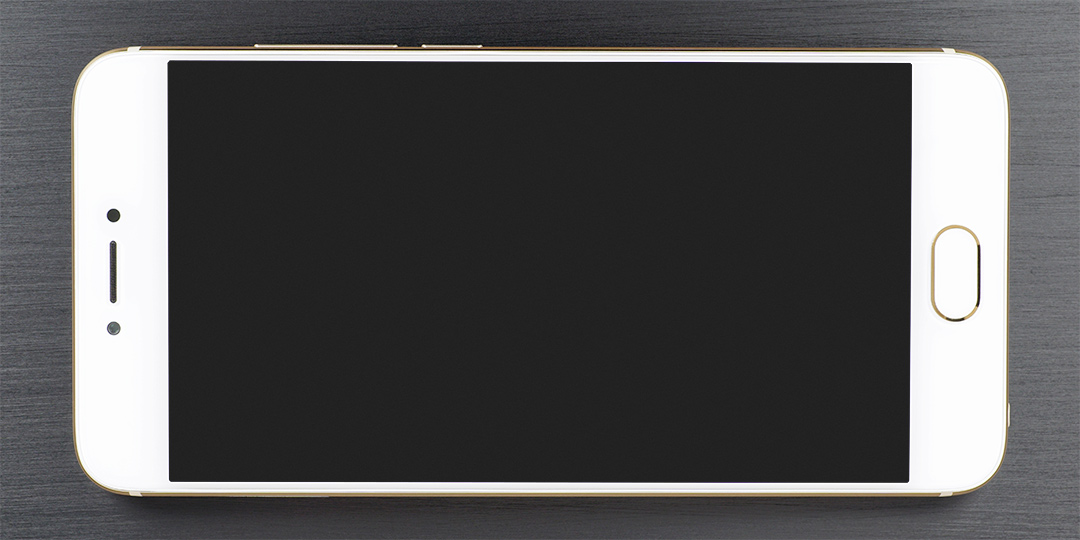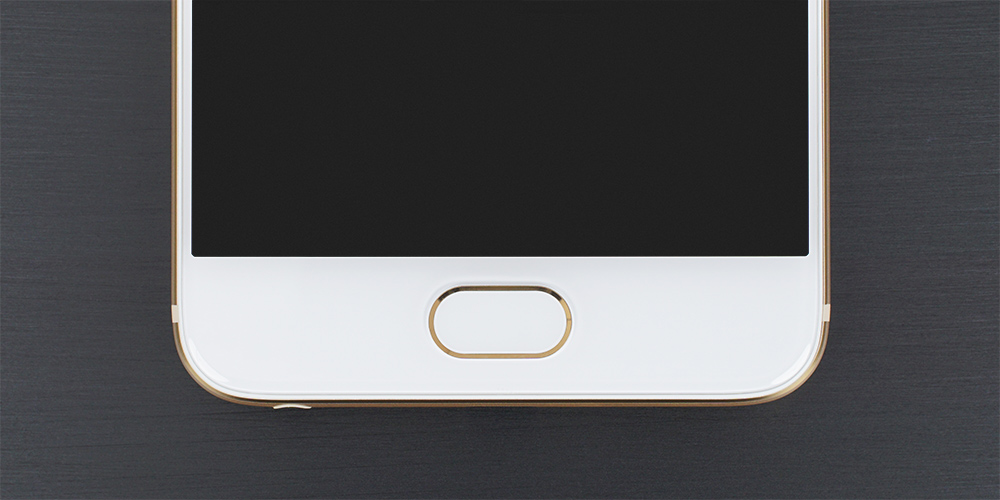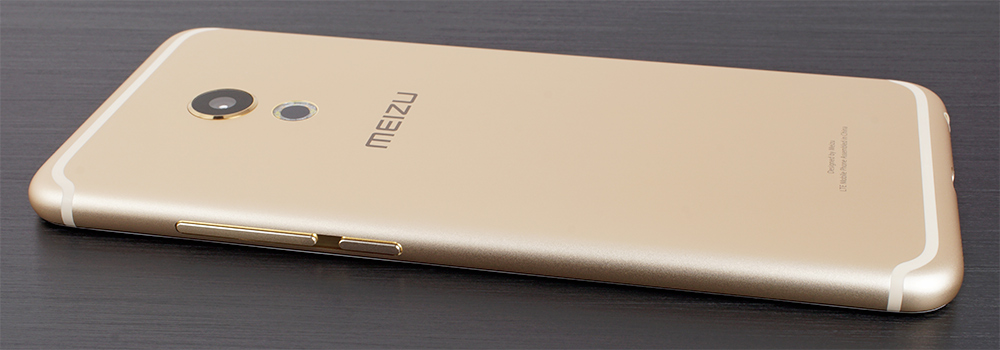The Meizu PRO 6 Review
by Matt Humrick on August 26, 2016 8:00 AM EST- Posted in
- Smartphones
- Mobile
- MediaTek
- Meizu
- PRO 6
Design
One thing Meizu admires is design consistency: All of its phones use the same materials, construction, and style. The PRO 6 continues this legacy, with an all-aluminum, sandblasted chassis whose rounded edges and corners make it comfortable, but a little slippery, to hold.
There are a few minor differences between it and Meizu’s previous generation of phones, which I’ll point out in a minute, but the biggest difference is size; Meizu has shrunk the screen of its flagship from 5.7-inches to only 5.2-inches. I would not call the PRO 6 a small phone, but it’s definitely not a phablet either, shaving 9mm and 7mm off the PRO 5’s height and width, respectively. The PRO 6 is essentially the same size as Huawei’s P9, another phone with a 5.2-inch display, and is about 5mm taller, a little more than 1mm wider, and 0.6mm thinner than Samsung’s Galaxy S7 (5.1-inch display) and Sony’s Xperia X (5.0-inch display). It seems the PRO 6’s purpose is less about replacing the PRO 5 and more about filling a size gap in Meizu’s lineup.
The front of the PRO 6 is still edge-to-edge Gorilla glass with a small radius that blends into a polished, chamfered edge on the aluminum chassis. There’s an almost nonexistent black border around the screen and the bezels, particularly on the sides, are reasonably small.
There’s a single, multi-purpose button below the screen. When pressed, it acts as a home button and makes a nice, solid click. Pressing and holding the button locks the screen. It also houses the touch-based fingerprint sensor and serves as a capacitive back button when not being used to unlock the phone or authorize purchases. The pill-shaped button is slightly recessed, which makes it easy to find without looking, and is surrounded by a polished gold or chrome accent depending on body color.
For the M3 note, Meizu focused on improving symmetry which applies to the PRO 6’s design as well. The rather small earpiece, centered above the display, is the same size as the PRO 5’s; however, the PRO 6’s narrower width makes it easier to align with the ear, making phone conversations easier to hear relative to the PRO 5. The ambient light/proximity sensor and front-facing camera are the same size and sit to the right and left of the earpiece, respectively. There’s also a white notification LED hidden below the bezel to the left of the camera. Whether an intentional design choice or an optical side-effect of the bezel, a glowing ring surrounds the LED when lit that looks neat and makes it easier to notice.
The only feature on the top edge is the PRO 6’s single noise-cancelling microphone. The USB Type-C port is centered on the bottom edge, with the primary microphone and 3.5mm headphone jack on one side and a mono speaker on the other. The circular openings for the speaker and microphone are the same size and finished with a polished chamfer that looks nice and eliminates sharp edges.
The left edge is home to a metal tray with slots for two NanoSIM cards. The single-piece volume rocker and power button sit within a nicely polished groove on the opposite side. Because the buttons share the same texture and there’s not much space between them, it’s easy to press volume down instead of power or vice versa. At least the buttons have a positive click when pressed and do not rattle when the phone shakes.
Around back we see a couple more subtle changes to Meizu’s established design. The rear camera’s protective lens is still circular and slightly raised, with a polished metal ring around its perimeter, but its diameter is smaller than the PRO 5’s. The flash module has also been redesigned: Instead of a vertical pill shape like its previous generation phones, Meizu’s PRO 6 uses a circular ring flash with five pairs of dual-color LEDs encircling a black center that matches the camera and contains the laser autofocus system. The ring flash is sunk just below the surface to protect the lens and the metal edge has a subtle, polished chamfer that ties in with the phone’s other highlights.
Integrating the antennas in the most functional, attractive way is a big challenge for designers. In previous phones, Meizu placed its antennas under plastic end caps on the top and bottom of its phones and cleverly hid the seam between plastic and metal with a machined and polished slot. Even though Meizu did a decent job matching the plastic’s color and texture to the aluminum chassis, viewing the phone from different angles revealed an obvious color mismatch that betrayed the appearance of a sleek, all-metal phone.
With the PRO 6, Meizu replaces the end caps with injection molded plastic antenna lines that hug the upper and lower edges of the back. The plastic is dyed to blend in with the phone’s color, and even though they do not match exactly, the antenna lines are not as distracting as those on some other phones.
The PRO 6 comes in three different colors: gold with white front like our review unit, silver with white front, and a dark gray with black front. These colors when combined with the aluminum chassis, machining highlights, and symmetric design make the PRO 6 a very elegant phone. Its exceptional build quality rivals even the most-expensive phones and is a point of distinction among its peers.


















48 Comments
View All Comments
Shadow7037932 - Friday, August 26, 2016 - link
Never coming lol.jjj - Friday, August 26, 2016 - link
The system perf results depend more on Meizu's ROM and config not on the SoC itself,you are blaming the SoC because you haven't seen it in other devices.This device is often slower than devices with the A72s at 2.1GHz and that's entirely on Meizu.
jjj - Friday, August 26, 2016 - link
The GPU perf is off too, this device should be hitting 40FPS in T-Rex not 30.jjj - Friday, August 26, 2016 - link
Not and ideal test but look at 360 N4 (2.1GHz) vs LeEco (2.3Ghz) vs Meizu Pro 6 vs MI 5 with SD820 https://youtu.be/oDkfpnxzOMA?t=385Not only Meizu is slow but they are far more aggressive in keeping the A72s offline.
Even so your benchmarks are off.
Lodix - Sunday, August 28, 2016 - link
Which is the floating app that the guy uses to monitor se CPU ?Matt Humrick - Friday, August 26, 2016 - link
This is a product review and only shows how well Meizu implemented the SoC in this particular phone. As you said, the PRO 6’s performance depends heavily on its software configuration. I consistently (I think) said PRO 6 instead of referring to the SoC when discussing performance, and I did specifically mention the role software plays on the first page:"but this depends on how Meizu prioritizes the A72 cores. If the PRO 6 places more emphasis on reducing power consumption by placing more threads on the middle-tier A53 cluster instead of migrating them to the higher performance A72 cluster."
We would need to do further testing, and see how the X20/X25 performs in more than one phone, before we could pinpoint its true performance potential in a proper SoC deep-dive article.
jjj - Friday, August 26, 2016 - link
Later in the review to some extent but when i made the first comment (sorry for the spam,no edit) i was at "Unfortunately, Meizu’s use of the Helio X25 and its deca-core CPU does not translate into a better user experience."I do consider PCMark as very software dependent too. Check out this Meizu with just A53s http://www.futuremark.com/hardware/mobile/Meizu+m1...
And In GFXBench i think they list some kind of average https://gfxbench.com/device.jsp?benchmark=gfx40&am...
The device itself is about looks and pressure touch for a certain type of buyers.
The SoC is interesting as 2.1-2.3GHz versions are half the price of a SD820 and that's why we see it in 135$ and up phones.
Cinnabuns - Friday, August 26, 2016 - link
The exact line you quoted mentions Meizu's use of the X25, strongly hinting that Meizu is to blame for the poor SOC performance. The preceding paragraphs almost go out of their way to not mention the X25 by name. It's pretty clear from that alone that the author believes Meizu may be hampering the SOC's performance with their own poor software configuration.jjj - Friday, August 26, 2016 - link
The line i quoted blames Meizu for the SoC choice., thus the SoC. Unless you interpret the term"use " in a way you can only do after seeing this conversation. The author himself doesn't know how specific this is to Meizu.Anyway Meizu didn't had a choice. They are in conflict with Qiualcomm over how they charge for patents and never liked them much anyway while the Exynos doesn't support CDMA2000.
JoeMonco - Saturday, August 27, 2016 - link
No, you're simply going out of your way to be offended.